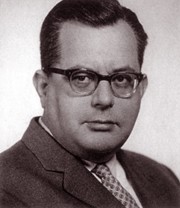
“[…] for his work on blood proteins and in particular the proteins that play a role in blood type and antigenic determinants. He provided the Swiss blood donor service with key scientific and organisational impetus and conducted exemplary research.”
Das preisgekrönte Werk von H. zielte hauptsächlich auf die beiden Schwerpunkte der Blutserologie, die Vermeidung von Transfusionszwischenfällen einerseits, Prophylaxe und Therapie des Morbus haemolyticus neonatorum (Tod des Foetus wegen Blutgruppenunverträglichkeit mit der Mutter) andererseits ab. In diesem Zusammenhang wurde seitens der Gutachter ganz besonders H.s Fähigkeit zur Verbindung von Wissenschaft und Praxis, von Laboratorium und Klinik hervorgehoben. Nachdem er beispielsweise habe nachweisen können, dass die Bestrahlung des Plasmas mit ultraviolettem Licht keinen sicheren Schutz vor Hepatitisübertragung gewährleiste, habe er zur Risikominimierung anstelle von Mischplasma Einzelspenderplasma herstellen lassen. H. habe sich aber auch auf dem nahe verwandten Gebiet der Immunohämatologie hervorgetan, so u.a. mit Untersuchungen zur Antigenstruktur von Paraproteinen (Eiweisskörper, die im Blut von Patienten mit Plasmocytomen als Zeichen der Krankheit entstehen und als Antigene wirken).

